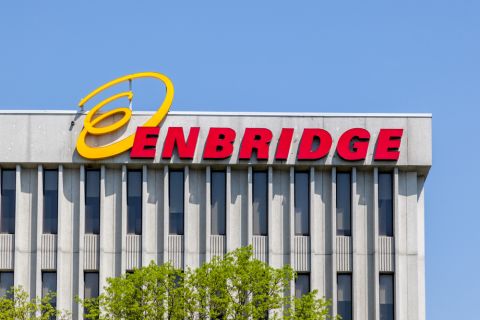Press releases about asset purchases contain the usual information: buyer, seller, deal value, proved reserves, current production, source of funding and other vital details. These days, add hedging. The more than year-long gridlock between buyers and sellers over asset values appears to be losing its grip on the U.S. producing-property marketplace, with buyers conceding to sellers' demands. Want producing assets? Ya gotta pay. Asset prices are rising so sharply that buyers are taking care to break down what they're paying for just the proved reserves in the package, so investors don't faint over the implied values. For example, Kerr-McGee's offer for Westport Resources carries an implied value of $1.91 per proved thousand cubic feet of gas equivalent (Mcfe), and EnCana's offer for Tom Brown Inc. has an implied value of $2.25. Each add, however, that after allotting some of their total bids to assets they'll be taking in other than proved reserves, Kerr-McGee is paying $1.39 per proved Mcfe and EnCana is paying $1.95. A year ago, Devon Energy's implied $1.50 per proved Mcfe for Ocean Energy was shocking. Today, it's blown away. How can buyers afford these offers? Enter hedging. The price-risk management tool is showing itself as buyers' only, but usually effective, defense against occasionally plummeting commodity prices. Locking in $33 for the assets' oil production for the next 24 months and $5.50 for the gas production, for example, makes the purchases more likely to be economic down the road-and not downright career-ending if an $18 oil and $1.50 gas market should reappear. In one example of the use of hedging, Denver-based Forest Oil Corp. hedged most of the 66 million cubic feet of gas equivalent (MMcfe) of daily gas production it received when buying 138 billion cubic feet equivalent (Bcfe) of proved reserves from Unocal Corp. in the Gulf of Mexico for $211 million. With five years of hedging in place, Forest expects the $211 million will be recovered in three years with 40% of the reserves remaining. A return is guaranteed. One could warn that the deal could be a failure if the investment that is needed to produce the remaining 40% turns out to be more expensive than the reward. In this case, the asset comes with abandonment liability. However, even without investment, at the end of three years, Forest will still own 40% of the reserves, and while the market value of proved, producing Gulf of Mexico reserves has varied in the past, they have never been worthless. Industry freshmen, looking at the recent sustained period of $3-plus gas and $28-plus oil, may wonder what all these claims for price-risk management are about. Forecasts are that $3 is the new North American gas-price floor and currently OPEC has a strong enough grasp of global oil markets that crude is not likely to fall below $24 again for long. But veteran producers-and even industry sophomores-have learned to never say never. So, if a buyer could guarantee getting $5.50 per Mcf for production from assets for which it is about to pay the owner $2 per Mcf, why wouldn't everyone run out and buy? Why would anyone sell? Well, there are operating expenses, taxes and other costs of owning the assets and getting the oil and/or gas out of the ground. And there are risks. For example, it is more difficult for a smaller producer to guarantee a certain amount of production in the future. And hedging counterparties, such as Enron, have been known to go bankrupt. Also, investors in E&P companies in the past have disdained hedging-many shareholders are playing the commodity markets by holding E&P stocks rather than contracts to actually deliver or buy physical amounts of oil and gas. For these investors, the producer's hedging of output removed the upside, as well as the downside. There are fewer of these E&P shareholders today, however, as more of them across the broad public securities market want their funds tied to real, fungible assets-oil and gas reserves in the ground-rather than soft ones, such as dot-com firms and energy-trading outfits. With hedging, buyers still aren't guaranteed to win the rate-of-return prize; instead, their odds improve exponentially. Following is how one producer, Oklahoma City-based Chesapeake Energy Corp., projects to do so. This spring, Chesapeake planned to buy $100 million of Midcontinent, Permian Basin and Texas Gulf Coast assets in four transactions totaling 68 Bcfe of proved reserves and 39 Bcfe of probable and possible. Production from the assets was 15 MMcfe per day. The implied purchase price was $1.47 per proved Mcfe. After allocating some of the deal value to unevaluated leasehold, probable and possible reserves, and other assets, Chesapeake estimated the price at $1.24 per proved Mcfe. Marc Rowland, executive vice president and chief financial officer, explains here how Chesapeake believes it has guaranteed returns on the purchase. Investor How much did you hedge? Rowland 100%. The beginning daily production rate is right at 1,600 barrels of oil and 5.5 million cubic feet of gas, so about 15 MMcfe per day. We hedged 100% of both of those streams through December 2005. We haven't hedged any thereafter yet. Investor Why not longer? Rowland The markets were pretty backward-dated (when future-month prices are lower than near-month prices) and this will be adequate protection for the near-term. Between now and this December, for example, gas prices in particular are likely to be higher. So we will get a chance to revise our hedge at levels even higher than we have in place through December 2005. Investor You need a cushion though, in how much you hedge? Rowland We have actually hedged up to 100% of projected production off our existing reserves with the thought being we're active drillers and active acquirers so there's likely to be volumes well in excess of that. We'll typically do that for 24 months and then we would be looking at 80% or if we got out to five years, say 60% of production, to provide security in our ability to deliver. Investor In a disaster, you could just buy production? Rowland Yes. We've got 15,000 wells spread out over a large area, so it's not so much a view we would be concerned with, but a smaller producer would probably be more conservative in trying to estimate the volumes. Investor What terms did you get? Rowland We hedged the oil at an average of $33.11 per barrel. And the gas is hedged at an average of $5.78 per Mcf. Investor What does this cost? Rowland It's on a cost-less basis. We are entering straight swaps with our counterparty so we don't actually pay anything for that. Investor Why hedge instead of entering into a volumetric production payment (VPP) deal? Rowland In the VPP structure, you're actually giving the volumes typically to the counterparty. It's a transaction financing alternative rather than a pricing alternative. You're delivering a volume of oil or gas to a third party and they may choose to hedge it but your obligation is simply to deliver the volume to them. Investor Are the economics just as good? Rowland It is less expensive for us to secure what I would call a "synthetic VPP," in which we arrange hedging with a counterparty and then go to the public securities market and issue either debt or preferred stock, or utilize our bank facility, to fund a transaction. In a VPP, someone takes on volumetric production risk and wants to be rewarded for that. The implied interest cost on the VPPs I've looked at has been in the 8% to 10% range. We can finance a transaction through our bank facility at Libor plus 150, which is 3.5%, and the hedging doesn't cost us anything. Investor How did you fund this transaction? Rowland We funded it with preferred stock. We issued a 4.125% perpetual preferred stock that was the funding for this acquisition and to pay off bank debt we incurred to pay for a January acquisition. Investor What returns can you expect? Rowland We hedged about 1 million barrels of production over the 21-month period. With that times the hedging amount, we have guaranteed ourselves gross oil revenue of about $34 million. The gas rate of 5.5 million a day times the 21 months...means we have about 3.5 Bcf of gas hedged, so gross revenue on the gas side will be about $20 million. That's in the first 21 months. Investor What about operating costs? Rowland Let's call operating costs $1 per Mcf. During the 21 months, you've produced about 10 Bcfe, so that's $10 million of operating costs. Subtracted from the $54 million of revenues, we have net cash income off this property of $44 million. Investor By doing nothing additional? Rowland Right. That's just from producing the assets, and not having enhanced production, or drilled probable or possible reserves. That's just current rates. When we then look at December 2005, we will have recovered, out of a $100-million purchase, about 43% of our investment and we will still have 85% of the purchased reserves remaining-without doing anything to the properties. And that's why these hedged transactions are so attractive. Said another way, if we were to go ahead and make a decision to hedge out for the whole time period, we would be looking at a complete repayment of the investment in about 3.5 years and still have well over half of the reserves remaining. Investor Why doesn't everyone do this? Rowland You are seeing other producers do this. We're not in a sea by ourselves. But it is instructive to run the economics and look at how powerful the current strip prices can be. We're talking about hedging in rates of return of 25%. There have been periods in the business when you couldn't even achieve returns of that size by drilling, whereas acquiring proved developed producing assets and hedging them is substantially less risky. It's not well understood in the market, I think, how powerful hedging economics are. And, I think some investors experience sticker shock when they see, for example, EnCana pay $2.25 per implied Mcfe of proved reserves for Tom Brown Inc. Some investors would probably just guess that it's not a good transaction when in fact it could be a very powerful transaction. Investor Surely there are some risks. Rowland There are risks. First you are relying on your counterparty to be able to perform. You can't achieve your hedging economics if your counterparty goes out of business, such as Enron did. At Chesapeake, we deal only with investment-grade counterparties-Morgan Stanley, Goldman Sachs, Banc Paribas, BP-so we're not taking that risk. The second risk for some companies is the ability to match collateral for a negative mark-to-market position. For example, if we hedge oil at $33 per barrel and there is a world oil problem and oil goes to $50, we have to post collateral for that negative mark-to-market between $33 and $50. We have credit arrangements in place with our counterparties so we can post letters of credit with our bank facility, but if someone did not have those in place, then that's a risk. A few years ago, there were a couple of producers who were hedged at lower levels when the market went against them, and they actually had to file for bankruptcy because they could not post the required letters of credit. Investor Collateral? Rowland We're not going to collect our oil until it is actually sold and if I've hedged December 2005 production at $33 and I'm not going to get the $33 until I sell it at that time, and in the meantime December 2005 crude goes up to $50, I've got to post $17 per barrel of collateral to my counterparty to assure it I'm going to pay $50 when December 2005 gets here. The other side is if crude goes to $20. Well, the counterparty sends us a check for $13, and we're back in the same place-we're selling oil for $33. Investor In December 2005, what if the best you could hedge for the next two years was something like $20 a barrel and $2 an Mcf? What would happen to your model of returns on this acquisition? Rowland We simply would not hedge. Investor You would be locking in uneconomic prices? Rowland That's right, and that's the whole point-we're trying to lock in super-powerful economic prices. We probably wouldn't hedge at $4 or $4.50 gas either. It's in the middle of what prices should be, so there's no compelling reason to hedge at that level. We're not protecting against a fall in prices to $2; we don't think gas can fall to $2. It becomes uneconomic to the industry, so we simply would not hedge it. THE WORKS Hedging is different from a volumetric production payment (VPP) structure in that in the latter, a physical volume of oil and/or gas is pledged to another party whereas in the former, no oil or gas is exchanged. An oil and gas producer may hedge 100 million cubic feet of gas per day through 2004, for example, with a counterparty at $5 per thousand cubic feet but will never give the counterparty any oil or gas. Instead, the producer is selling the oil and gas on the open market at whatever price it gets or negotiates, and the counterparty is responsible for making up the price difference if below $5 or gets the price difference if it is above $5. Meanwhile, the counterparty is selling the risk to speculators and to parties that want to cap their price exposure. An airline is an example. "The counterparty is booking a bet, if you will, but they would call it a trade. Would they keep that risk on their books? No. They're turning around and selling that exposure to someone else that consumes oil that makes sure that if oil goes up, they can buy it for $33 per barrel," says Marc Rowland, Chesapeake Energy Corp. chief financial officer.
Recommended Reading
Enbridge Advances Expansion of Permian’s Gray Oak Pipeline
2024-02-13 - In its fourth-quarter earnings call, Enbridge also said the Mainline pipeline system tolling agreement is awaiting regulatory approval from a Canadian regulatory agency.
Canadian Natural Resources Boosting Production in Oil Sands
2024-03-04 - Canadian Natural Resources will increase its quarterly dividend following record production volumes in the quarter.
BP Pursues ‘25-by-‘25’ Target to Amp Up LNG Production
2024-02-15 - BP wants to boost its LNG portfolio to 25 mtpa by 2025 under a plan dubbed “25-by-25,” upping its portfolio by 9% compared to 2023, CEO Murray Auchincloss said during the company’s webcast with analysts.
CorEnergy Infrastructure to Reorganize in Pre-packaged Bankruptcy
2024-02-26 - CorEnergy, coming off a January sale of its MoGas and Omega pipeline and gathering systems, filed for bankruptcy protect after reaching an agreement with most of its debtors.
Kissler: OPEC+ Likely to Buoy Crude Prices—At Least Somewhat
2024-03-18 - By keeping its voluntary production cuts, OPEC+ is sending a clear signal that oil prices need to be sustainable for both producers and consumers.





